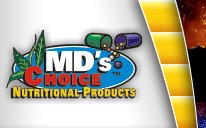Trace Elements
![]()
| Chromium |
Physiological Role
Absorption and Excretion of Cr
Requirements for Cr
Chromium in Foods
Deficiency of Cr
Toxicity of Cr
- Other transition elements such as Fe, Zn, Cu and Mo function in enzyme systems, metallo-protein complexes, and related structures
- No such role for Cr has yet been identified
- Is Cr the exception among the transition elements?
- Or, do the exceedingly small amounts in which it occurs elude measurement capabilities to date?
- Cr is biologically active only in the form of glucose tolerance factor (GTF) which consists of the following: Cr (111), nicotinic acid and glutathione (which consists of the amino acids glycine, cysteine, and glutamic acid).
- Other forms of Cr must be converted to GTF before exerting biological activity
- GTF occurs preformed in certain foods and can be utilized directly by humans and animals
- Different individuals have different abilities to synthesize GTF from inorganic Cr, niacin, and amino acids
- Different individuals depend on preformed GTF to different degrees
- Site of GTF synthesis may be the intestinal flora or a special tissue (possibly the liver)
- Cr in its biologically active form resembles a hormone
- It is released into the blood in response to a physiological stimulus (insulin)
- It is transported to the periphery where it facilitates a reaction
- In the absence of GTF, the reaction would occur at a much slower rate
II. Absorption and Excretion of Cr
- Inorganic Cr is largely unavailable and excreted with the feces (only 0.5% is absorbed)
- Cr in GTF is well absorbed and retained (up to 25%)
- Urine is the major excretory route of absorbed Cr (95%).
- Minimum requirement of absorbable Cr is near 15 ug/day in humans
- Dietary Cr requirement is much more difficult to determine than absorbable Cr requirement because of the great difference in biological availability of Cr in different foods
- Cr requirement is increased by diabetes, pregnancy, and lactation
- A tentative range of 50-200 ug/day of dietary Cr has been suggested by NRC as safe and adequate for healthy adults
IV. Chromium in Foods (Present Knowledge in Nutrition, 1984; J. Nutr. 126:2441S, 1996)
- Good sources of Cr (value reported before 1980 are generally inaccurate)
- Meat, poultry, fish, dairy products tend to be low
- Fruits, vegetables, and grain products are variable in Cr
- Beans, other seeds and dark chocolate may contain more Cr than other foods
- Yeast
- Molasses and unrefined brown sugar
- Black pepper is a concentrated source, but is not generally consumed in amounts sufficient to contribute significantly to the diet
- Acidic foods promote leaching of Cr from stainless steel but it has not be determined whether this is a nutritionally useful Cr source
- Occurrence of Cr deficiency
- Associated with protein - calorie malnutrition
- Marginal Cr deficiency is suspected to exist in USA during pregnancy and old age
- Signs of Cr deficiency
- Unexpected weight loss
- Impaired glucose tolerance
- Decreased respiratory quotient
- Peripheral neuropathy
- Pronounced negative nitrogen balance
- Low blood and hair Cr levels
- Negative Cr balance
- Cr (VI) compounds appear to be more toxic than Cr (III)
- Acute systemic Cr intoxication is rare but has been produced
- Single oral dose of 700 mg/kg BW of Cr (VI) in mature cattle
- Single oral dose of 30-40 mg kg BW of Cr (VI) in young calves
- Maximum tolerable dietary levels have been set at 3,000 ppm as the oxide and 1,000 ppm as the chloride for domestic animals
![]()
Trace Elements

For individual consultation or questions about our products, call
1-800-628-0997
Click Here for a Printable Version of This Page
